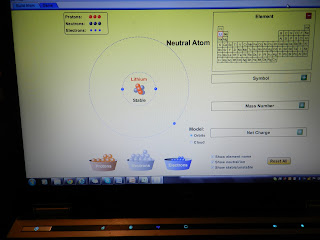I chose to do the build a molecule activity found here…. http://phet.colorado.edu/en/contributions/view/3434
1) A
2) both B and C are correct, D
3) A, HCl
4) B
5) A, methane
6) D, water
7) C, chlorine
2. Work with any of the Chemistry Simulations to create your own Teaching Idea. The criteria for this is as follows:
a. must identify and meet three (3) science education standards
b. must be original work
c. must be scientifically accurate and appropriate for the directed grade level.
Lesson Name: Build Your Own Molecule
Simulation: Build A Molecule
Grade Level: 2nd Grade
Science Education Standards:
· C.4.1 Use the vocabulary of the unifying themes to ask questions about objects, organisms, and events being studied
· C.4.6 Communicate the results of their investigations in ways their audiences will understand by using charts, graphs, drawings, written descriptions, and various other means, to display their answers
· D.4.1 Understand that objects are made of more than one substance, by observing, describing and measuring the properties of earth materials, including properties of size, weight, shape, color, temperature, and the ability to react with other substances
Activity
- · Teacher will introduce students to the concept of molecules with a short lesson on atoms and how joining atoms together can form new molecules.
- · After the introductory lesson, students will use the Build A Molecule simulation on the computer to see how joining individual atoms can form many different molecules.
- · While completing the simulation, students will complete a worksheet and fill in a simple table, breaking down which atoms they used, how many of each atom, and what molecule was formed.
- · After completing the simulation, students will then be asked to use different items around their house to build 3-D molecules to explain in front of the class at school.





